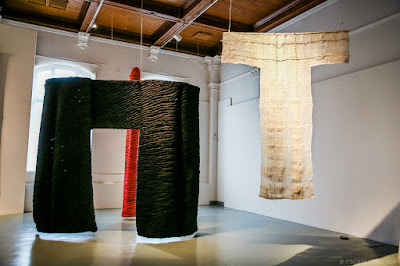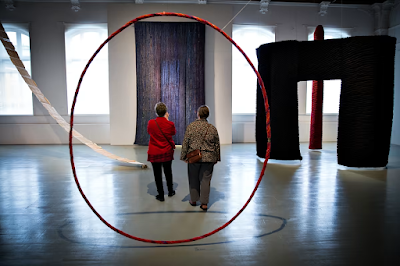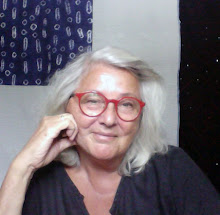 |
| Sun Spots (1) detail, cyanotype on paper by April Martin, 2021 |
April Martin was one of the Toronto area artists who was invited to create new art for the renovated Gladstone Hotel, now called Gladstone House, one of the oldest buildings still operating as a hotel in Toronto.
 |
| Sun Spots (1),2021, cyanotype on paper |
April Martin is a process-based sculptor.
She enjoys creating art that allows things to happen.
In this case the sunlight acted together with the materials of chemicals and paper.
This blog has featured April Martin before. Please have a look at the August 2019 post, or the January 2018 post or the May 2016 posts if you are interested in seeing more of her collaborations.
This artist is curious. She believes in magic. She opens personal windows for herself and for us.
 |
| Sun Spots (1) detail, cyanotype on paper by April Martin 2021 |
April Martin is my daughter and last month I visited Gladstone House (room 307) so that I could see her work. The rooms are elegant and have a minimalist aesthetic. I took this photo just before I left after a lovely two night stay (and a beautiful city visit with her).
All the guest rooms have the neutral style seen in this photo yet each is made unique with original art created by local Toronto artists. I've written about the Gladstone hotel's annual exhibition of textile art, Hard Twist, several times on Judy's Journal. While that show is not happening anymore, the hotel is still committed to supporting the arts. Read about the art program and find the names of the other artists involved in the new décor at this link.
"Look up! Notice the ten panes of differently textured glass, as you come and go through the south entrance of the hotel. These photograms were captured by pressing photosensitive paper against early spring light that filtered through the unique crystalline surfaces. Like the marks that stain your eyelids after staring at the bright sky, these shapes stretch as doorways into other, blue worlds." April Martin









.jpg)
.jpg)
.jpg)
















